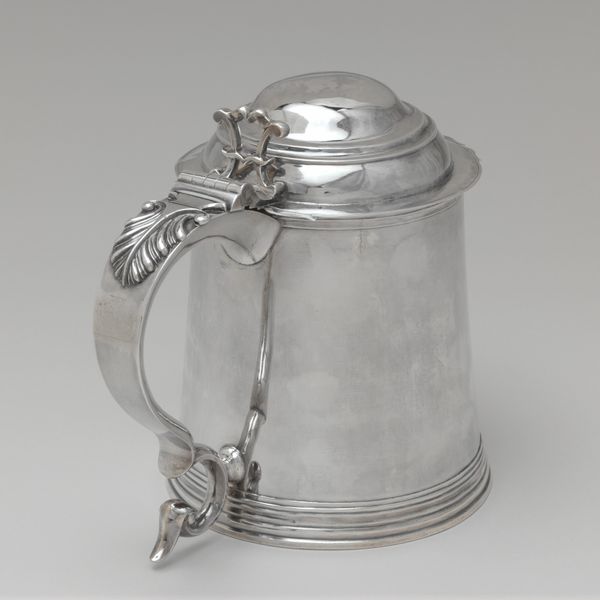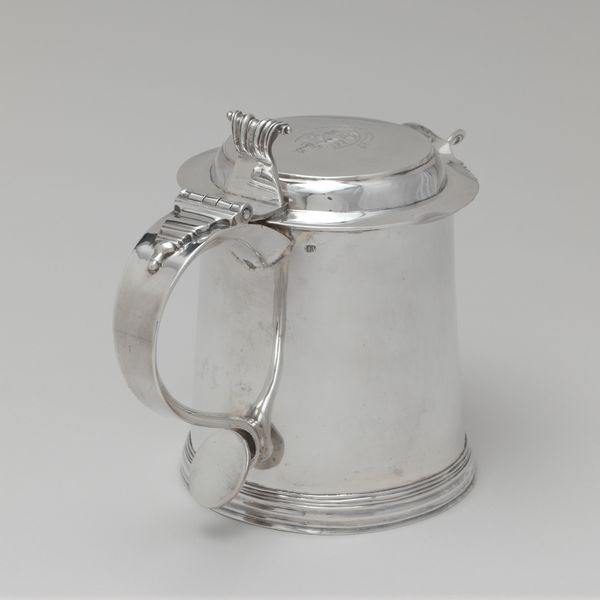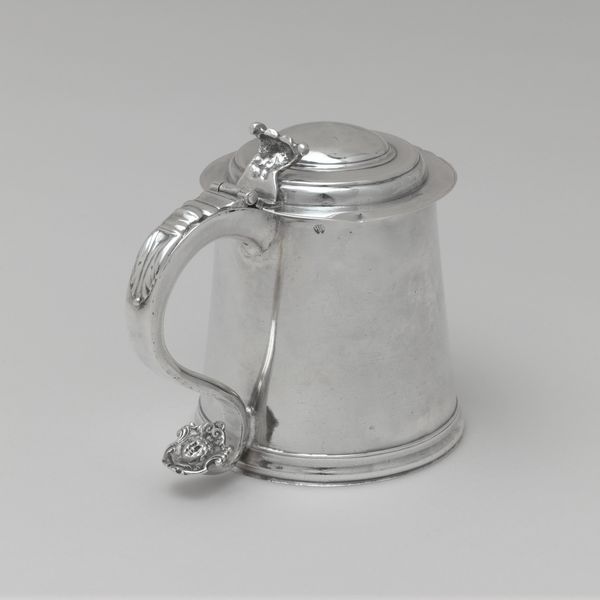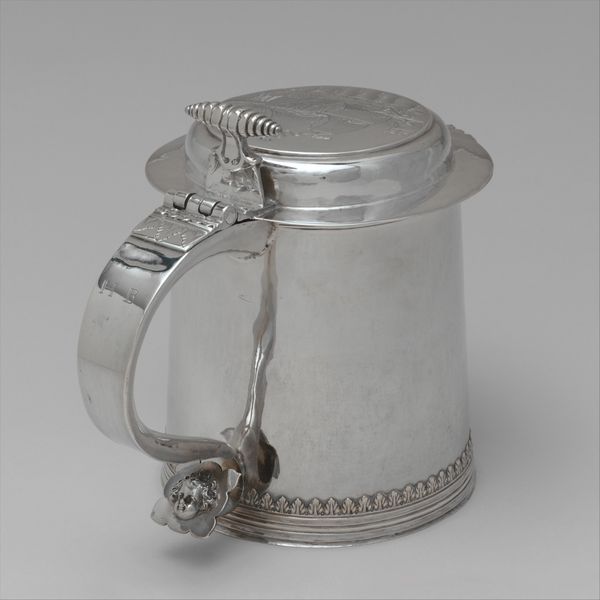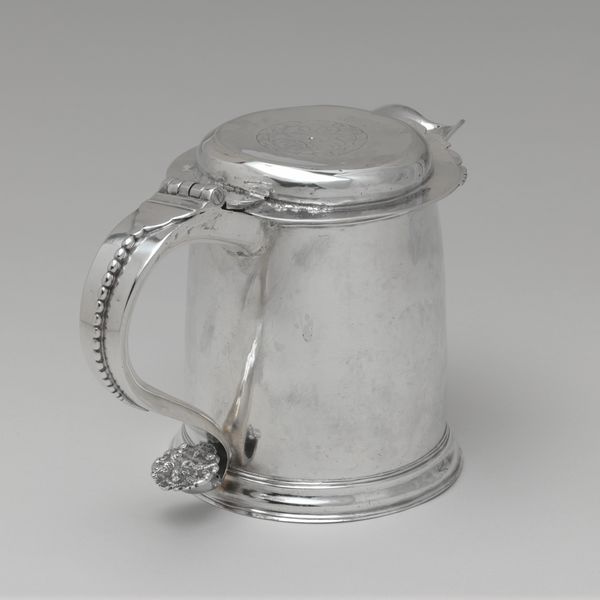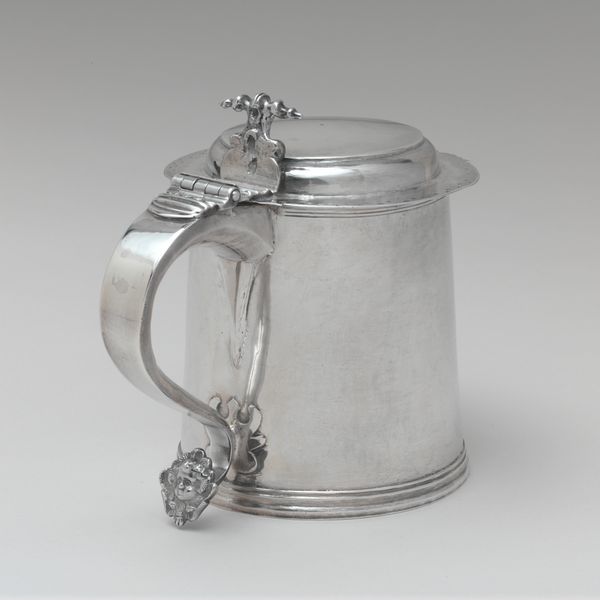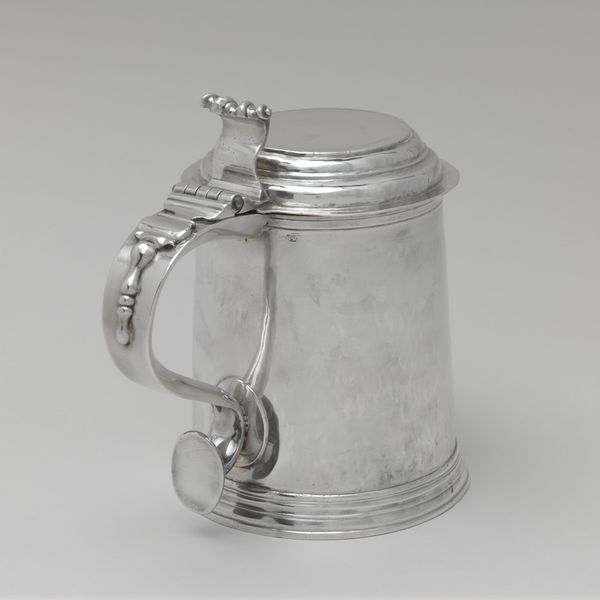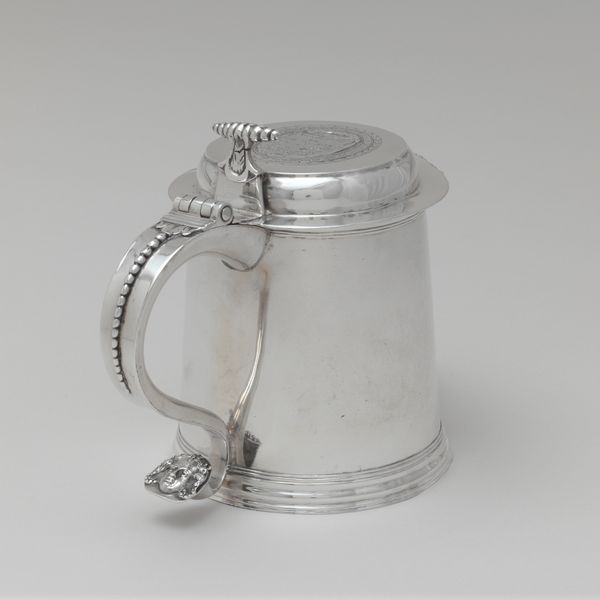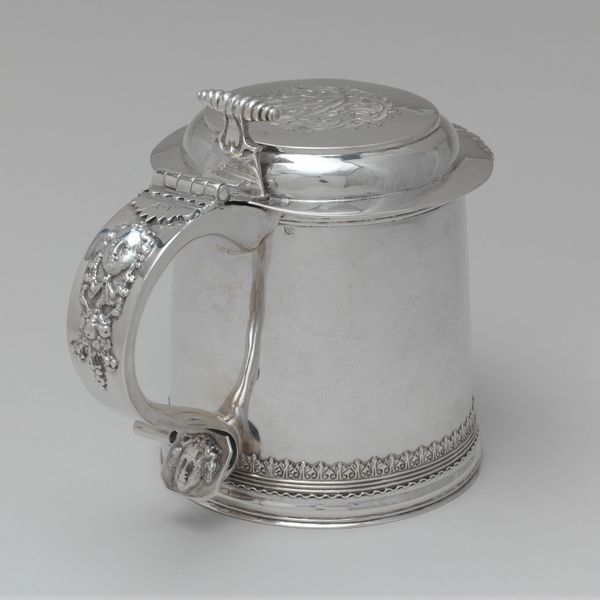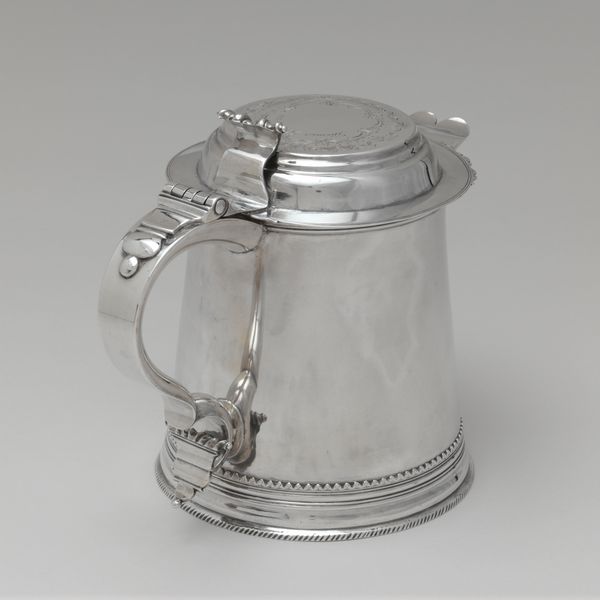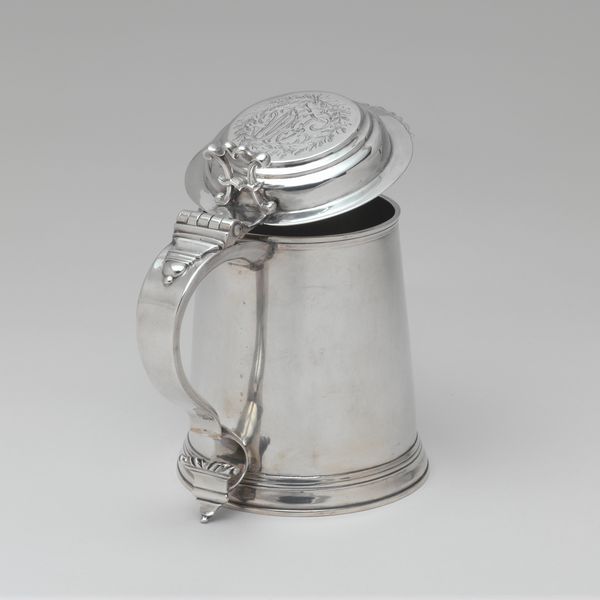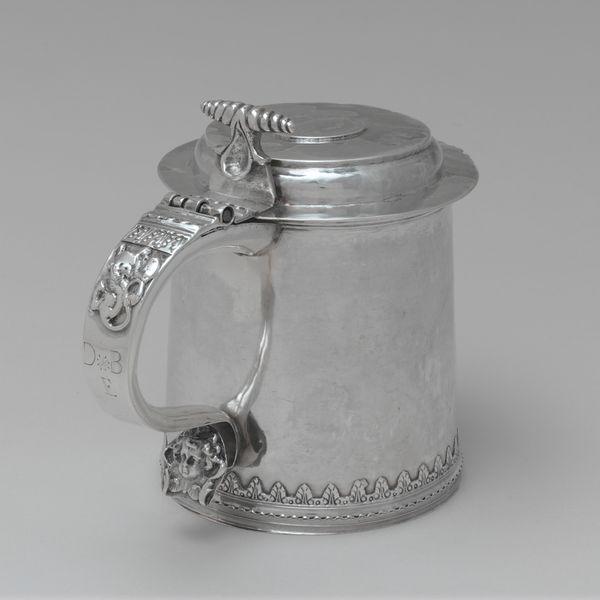
metal
#
metal
Dimensions: Overall: 7 1/16 x 8 1/16 in. (17.9 x 20.5 cm); 27 oz. 10 dwt. (855.8 g) Lip: Diam. 4 9/16 in. (11.6 cm) Base: Diam. 5 1/4 in. (13.3 cm)
Copyright: Public Domain
Curator: Let's explore this Tankard, dating from 1700 to 1715 and currently held at the Metropolitan Museum of Art. It’s crafted from metal, reflecting the skilled craftsmanship of the period. Editor: My immediate impression is one of understated elegance. The smooth, silvery surface and clean lines exude a quiet sophistication. It feels both functional and ceremonial. Curator: Function and status were indeed closely linked. This type of tankard, particularly when made of silver, spoke volumes about the owner’s wealth and position within the community. Drinking vessels like this were displayed and used during social gatherings, acting as symbols of hospitality and affluence. Editor: Thinking about the broader social context, I wonder about the enslaved laborers who were likely involved in mining the metals used to create it. It’s vital to acknowledge the labor and social hierarchies embedded within its creation, to recognize this is not just a beautiful object. Curator: Absolutely, that's a crucial consideration. The demand for precious metals fueled colonial exploitation, a harsh reality behind such luxury items. Moreover, consider the regulations surrounding alcohol at the time; its consumption would be governed by specific social customs, often reinforcing power dynamics within households and communities. Editor: The very act of toasting and sharing from such a vessel becomes a performative act of inclusion or exclusion, subtly enforcing social boundaries. Even something as seemingly straightforward as a drinking vessel carries loaded symbolism related to identity and social positioning. Curator: Exactly, its significance extended far beyond mere utility. It's a tangible link to a past defined by strict social codes and global power structures. And how those power structures manifest today, with issues such as accessibility and wealth distribution reflected in how such objects are seen and interpreted. Editor: Revisiting the visual qualities for a moment: seeing those elaborate motifs adorning the handle and lid, almost gothic in appearance, gives me chills. Knowing their production rested on human suffering taints their beauty. But recognizing the historical roots to their form allows us to approach the object through a critical lens. Curator: Precisely, analyzing such an object means holding beauty and social responsibility in productive tension. Editor: This object certainly offers layers of context to contemplate. Curator: Indeed, it compels us to re-examine both the artistry and the complex socio-political backdrop.
Comments
No comments
Be the first to comment and join the conversation on the ultimate creative platform.
